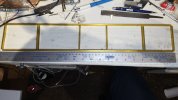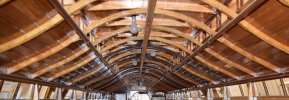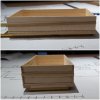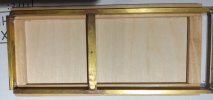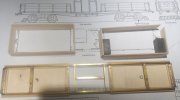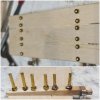DafyddElvy
1:22.5 & 15mm Scale Trams, , NG Steam Railways
Finally I have made a proper start on my first Manx Electric Railway vehicle, loco Number 23.
That's the chassis main frames assembled, next will be the body to go on top before I do any more work to the chassis.
The drawings I purchased are a little under scale hence the chassis being a wee bit longer than that on the drawing.
David
That's the chassis main frames assembled, next will be the body to go on top before I do any more work to the chassis.
The drawings I purchased are a little under scale hence the chassis being a wee bit longer than that on the drawing.
David

